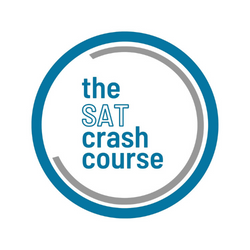If you’ve ever searched for “how to study for the SAT,” “how to study for the SAT in a week,” or “how to study for the SAT in a month,” you’ll know that there’s no shortage of advice out there. While it’s possible to make significant progress in a short amount of time, the reality is that there’s no one-size-fits-all approach or magic formula. Success on the SAT largely depends on your commitment, motivation, and desire to succeed. That being said, a structured and efficient 3-month study plan can greatly increase your chances of reaching your target score. In this blog post, we’ll walk you through a step-by-step process to create your personalized 3-month SAT study plan, which offers a more reasonable timeframe to maximize your potential.
Step 1: Set a Goal – Define Your Target Score
Before you begin studying, it’s crucial to establish a target SAT score based on the admission requirements of your desired schools. Research the 75th percentile scores for each school on your list, and set your target score as the highest of these values.
Step 2: Determine Your Starting Point
To assess your current SAT performance, take a practice test online or from a prep book. The College Board provides 10 practice tests on its website, along with scoring tools to help you gauge your starting point.
Step 3: Calculate Your Required Study Hours
Based on the difference between your target and starting scores, estimate the number of hours you’ll need to study using the guidelines below. Keep in mind that these are approximate values, and individual study times may vary:
- 0-30 point improvement: 10-12 hours
- 30-70 point improvement: 20-22 hours
- 70-130 point improvement: 40-45 hours
- 130-200 point improvement: 80-85 hours
- 200-330 point improvement: 150 hours or more
Determine the number of hours you will need to study in order to reach your target score.
Step 4: Develop Your Customized 3-Month Study Plan
Design a study plan that suits your learning style and schedule while ensuring consistency and thorough coverage of all SAT sections. Here’s a sample low-intensity plan, ideal for a 70-130 point improvement over 12 weeks:
Week 1: Take your first practice test
Week 2: Review your answers from Week 1
Week 3: Familiarize yourself with the Reading section – Practice questions and develop personalized strategies
Week 4: Familiarize yourself with the Writing section – Review sentence construction, conciseness, punctuation, and main idea
Week 5: Familiarize yourself with the Math section – Practice a wide range of problems and review missed questions
Week 6: Continue reviewing the Reading section
Week 7: Continue reviewing the Writing section
Week 8: Continue reviewing the Math section
Week 9: Take another practice test to assess progress
Week 10: Review your answers from Week 9
Week 11: Continue drilling difficult topics
Week 12: Specific review and relaxation – Focus on your weakest areas and avoid over-studying right before the test

The best plan is the plan that works for you.
Step 5: Gather Essential Study Supplies
Equip yourself with the necessary study materials for a smooth and efficient learning experience. Recommended resources include:
- College Board‘s website: official practice tests and questions
- The Official SAT Study Guide: comprehensive SAT Prep book
- College Board-approved calculator
- A notebook for recording missed questions and explanations
Step 6: Stay Committed and Consistent
Maintaining a consistent study routine is key to achieving your SAT goals. With determination and a well-crafted plan, you’re well on your way to making your SAT dreams a reality.
Lastly: Ready, Set, Study!
Armed with your personalized study plan, it’s time to take action. Begin by taking a baseline test to determine your current SAT score, and then dive into our SAT Prep Courses for guidance on scheduling your study sessions and mastering the exam content. Best of luck to all future test-takers!

